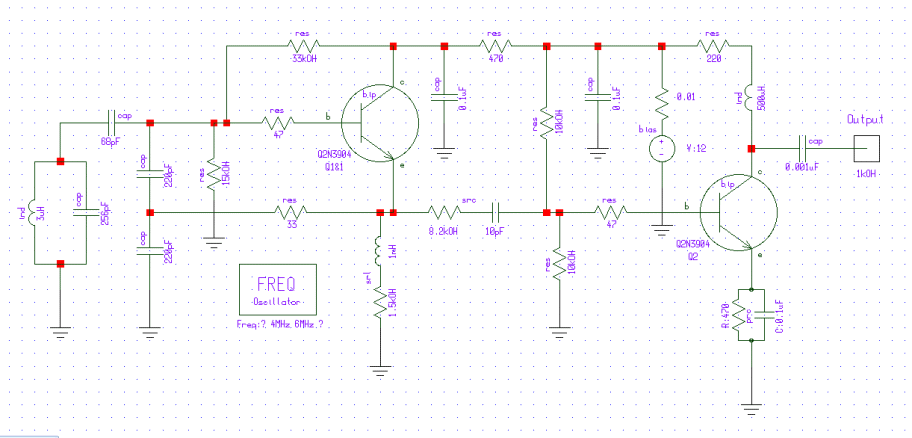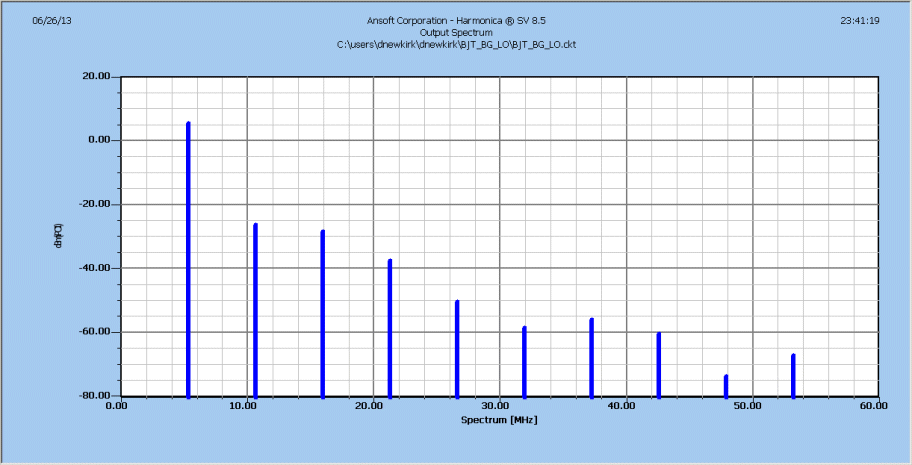A Two-BJT Variable-Frequency Oscillator
JFETs are commonly used as the oscillatory active device in the variable-frequency oscillators (VFOs) used in amateur radio construction projects. Needing a signal source capable of driving a frequency mixer that used either a BF998 dual-gate-MOSFET or a 6AC7 pentode as its active device, I decided to build a VFO that used a bipolar junction transistor (BJT) as the signal generator. Figure 1 presents the circuit as drawn in the student version of Serenade 8.5, a system- and circuit-simulation software product formerly sold by Ansoft of Pittsburgh, Pennsylvania. Figures 2 and 3 show the circuit's simulated output waveform and output spectrum with a 1-kilohm resistive load.
 |
| Figure 1—This variable-frequency oscillator uses two 2N3904 bipolar junction transistors to produce a 5 V peak-to-peak signal at 5.3 MHz. With a 2:1 (turns ratio) broadband transformer substituted for the 220-ohm resistor and 500-microhenry choke in Q2's collector, the circuit will drive a 50-ohm load at 10 dBm. For better frequency stability, power the circuit from a regulated 12-V supply (that 0.01-ohm resistor in series with the voltage source is a convenience for modeling and is not present as a discrete component in the version I built), and use C0G (zero temperature coefficient) parts for the fixed-value capacitors in Q1's base circuitry. |
 |
| Figure 2—Simulated output waveform of the 5.3-MHz BJT oscillator/amplifier circuit. |
 |
| Figure 3—Simulated output spectrum of the two-BJT oscillator/amplifier circuit. |



